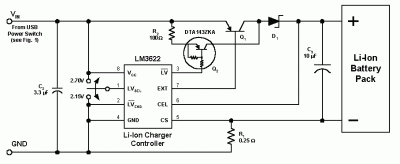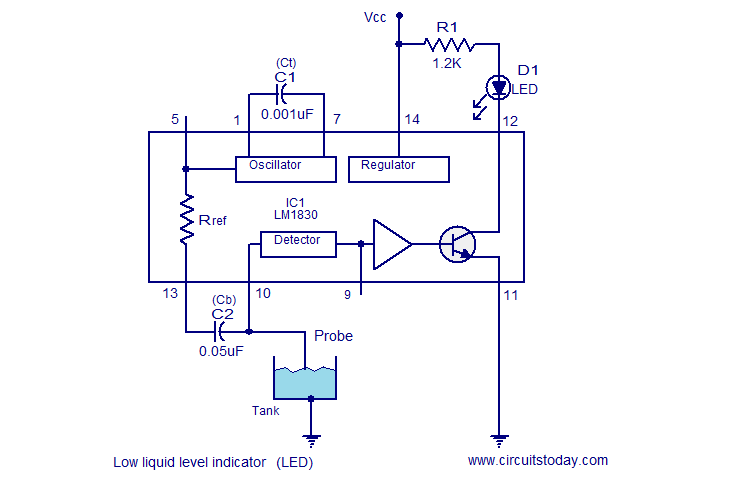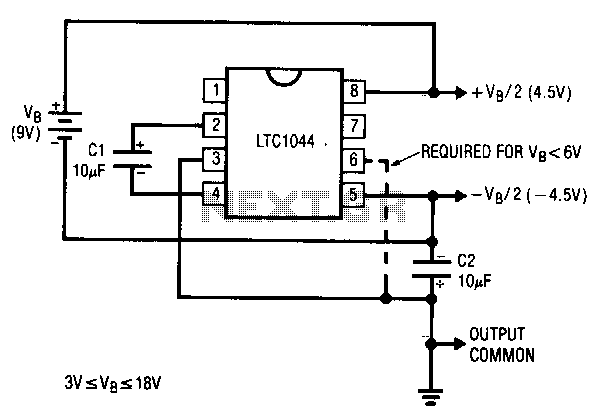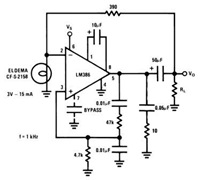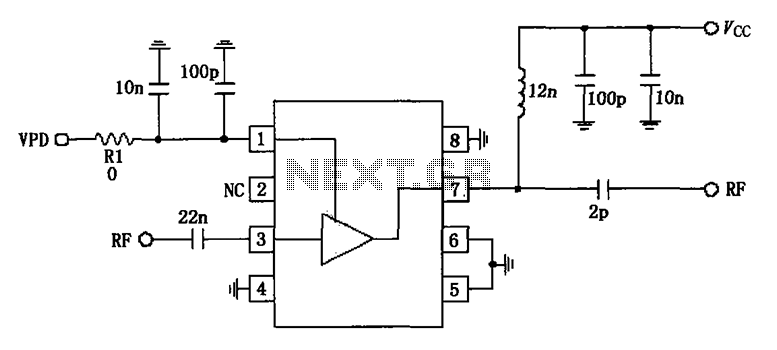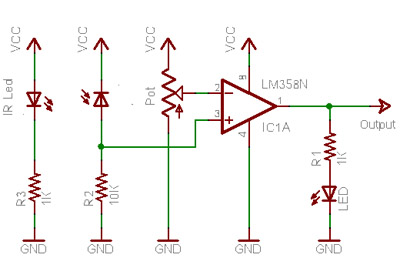
Low battery indicator
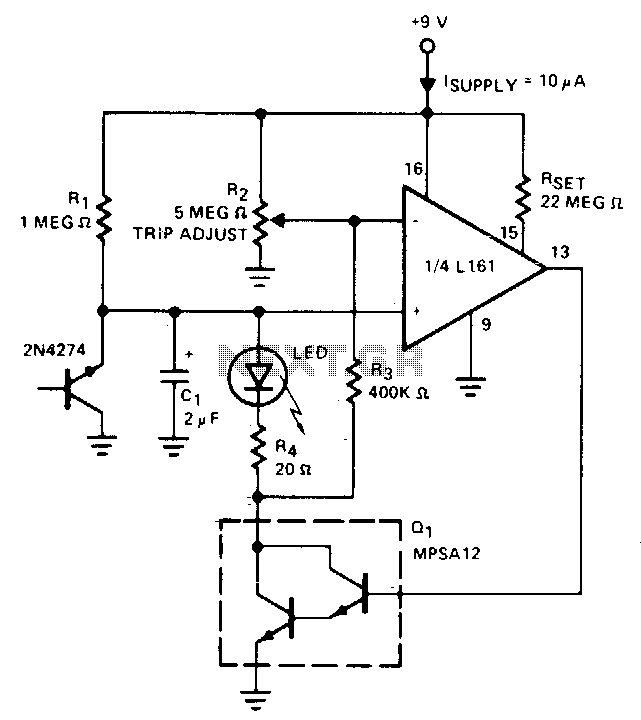
The indicator flashes an LED when the battery voltage drops below a certain threshold. The 2N4274 emitter-base junction serves as a zener diode, establishing approximately 6V on the L161's positive input. As the battery voltage decreases, the output of the L161 goes high, which activates the Darlington transistor, discharging capacitor C1 through the LED. The interval between flashes is roughly two seconds, providing a low battery warning with an average power drain of only 10 µA.
The circuit described functions as a low battery indicator utilizing a combination of a zener diode configuration and a Darlington transistor to manage the LED signaling. The 2N4274 transistor's emitter-base junction is configured to operate as a zener diode, which stabilizes the voltage at approximately 6V. This stabilized voltage is critical as it serves as a reference for the L161 comparator IC.
When the battery voltage drops below the predetermined threshold, the L161's output transitions to a high state. This output is connected to the base of the Darlington transistor, which allows for high current gain. Consequently, when activated, the Darlington transistor allows current to flow from the power supply through the LED, illuminating it to signal a low battery condition.
Capacitor C1 plays a significant role in controlling the timing of the LED flashes. When the Darlington transistor is turned on, C1 discharges through the LED, producing a flash. The time interval between flashes is approximately two seconds, which is a suitable duration for alerting users without being overly intrusive. The design also ensures that the circuit operates with minimal power consumption, drawing an average of only 10 µA, which is essential for battery-powered applications to extend the operational life of the device.
Overall, this low battery indicator circuit efficiently combines active and passive components to provide a reliable warning system while maintaining low power usage, making it an ideal solution for portable electronic devices.The indicator flashes an LED when the battery voltage drops below a certain threshold. 2N4274 emitter-base junction serves as a zener which establishes about 6V on the L161"s positive input. As the battery drops, the L161 output goes high. This turns on the Darlington, which discharges Cl through the LED The interval between flashes is roughly two seconds and gives a low battery warning with only 10 µ A average power drain.
The circuit described functions as a low battery indicator utilizing a combination of a zener diode configuration and a Darlington transistor to manage the LED signaling. The 2N4274 transistor's emitter-base junction is configured to operate as a zener diode, which stabilizes the voltage at approximately 6V. This stabilized voltage is critical as it serves as a reference for the L161 comparator IC.
When the battery voltage drops below the predetermined threshold, the L161's output transitions to a high state. This output is connected to the base of the Darlington transistor, which allows for high current gain. Consequently, when activated, the Darlington transistor allows current to flow from the power supply through the LED, illuminating it to signal a low battery condition.
Capacitor C1 plays a significant role in controlling the timing of the LED flashes. When the Darlington transistor is turned on, C1 discharges through the LED, producing a flash. The time interval between flashes is approximately two seconds, which is a suitable duration for alerting users without being overly intrusive. The design also ensures that the circuit operates with minimal power consumption, drawing an average of only 10 µA, which is essential for battery-powered applications to extend the operational life of the device.
Overall, this low battery indicator circuit efficiently combines active and passive components to provide a reliable warning system while maintaining low power usage, making it an ideal solution for portable electronic devices.The indicator flashes an LED when the battery voltage drops below a certain threshold. 2N4274 emitter-base junction serves as a zener which establishes about 6V on the L161"s positive input. As the battery drops, the L161 output goes high. This turns on the Darlington, which discharges Cl through the LED The interval between flashes is roughly two seconds and gives a low battery warning with only 10 µ A average power drain.
